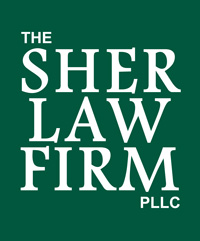Intellectual Property: Copyrights, Trademarks and Patents
Intellectual Property falls into three general categories: Copyright, Trademarks and Patents.
Copyrights
Copyright is a legal concept, giving the creator of an original, artistic, work exclusive rights to it, usually for a limited time. Copyright may apply to a wide range of creative, intellectual, or artistic forms, or “works”. These can include poems, theses, plays, other literary works, movies, dances, musical compositions, audio recordings, paintings, drawings, sculptures, photographs, software, radio and television broadcasts, and industrial designs. Copyright does not cover ideas and information themselves, only the form or manner in which they are expressed.
Do you have an artistic work that you need protected? Are you involved in copyright litigation? Please contact us via the form on the upper right for us to help you.
Trademarks
A trademark, or service mark is a distinctive sign or indicator used by an individual, business organization, as an identifier of the source of goods or services.
A trademark is typically a name, word, phrase, logo, symbol, design, image, or a combination of these elements. There is also a range of non-conventional trademarks comprising marks which do not fall into these standard categories, such as those based on color, smell, or sound.
Do you have a trademark, or servicemark that you want protected? Are you involved in trademark litigation? Please contact us via the form on the upper right for us to help you.
Patents
Patents are government issued documents that allow the owner the right to exclude others from making, using, offering to sell, or selling a patented invention.
A patent specification is the body of the patent that describes in detail what the invention is and how one of ordinary skill in the art can make the invention without undue experimentation. Patent claims come at the end of the patent and literally claim what is the invention. Patent claims are typically broader than the specification and in litigation it is the patent claims which are litigated as they broadly disclose to the public the nature of the invention.
Do you have an idea you want protected with a patent? Are you involved in patent litigation? Please contact us via the form on the upper right for us to help you.
The law switched from a “first-to-invent” system to a “first inventor-to-file” system on or March 16, 2013. The new law also expands the definition of prior art used in determining patentability. Actions and prior art that bar patentability will include public use, sales, publications, and other disclosures available to the public anywhere in the world as of the filing date, other than publications by the inventor within one year of filing (inventor’s “publication-conditioned grace period”), whether or not a third party also files a patent application. The law also notably expands prior art to include foreign offers for sale and public uses.

